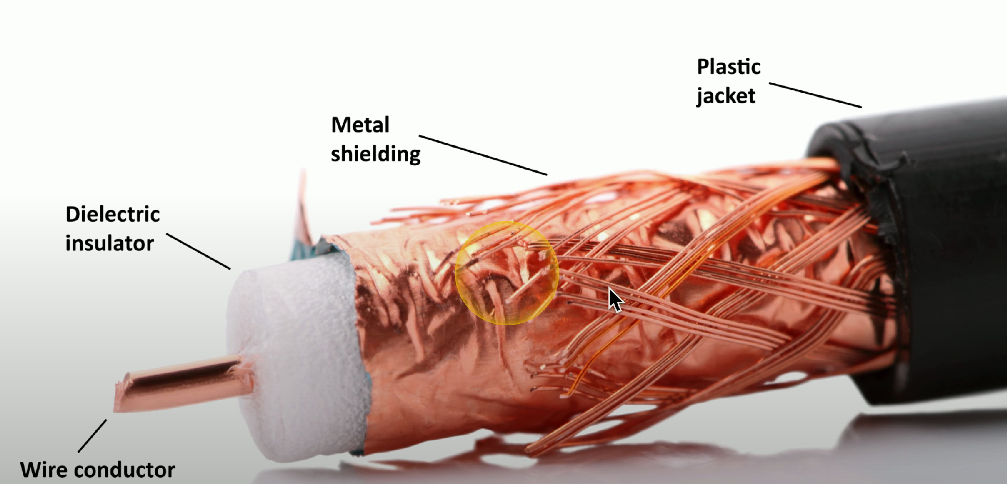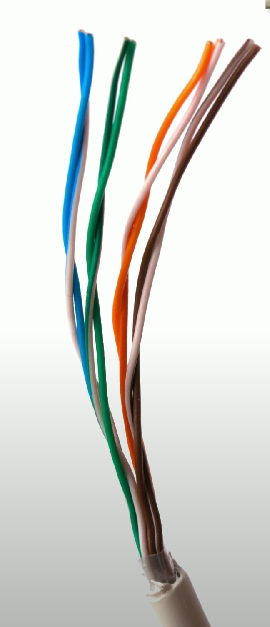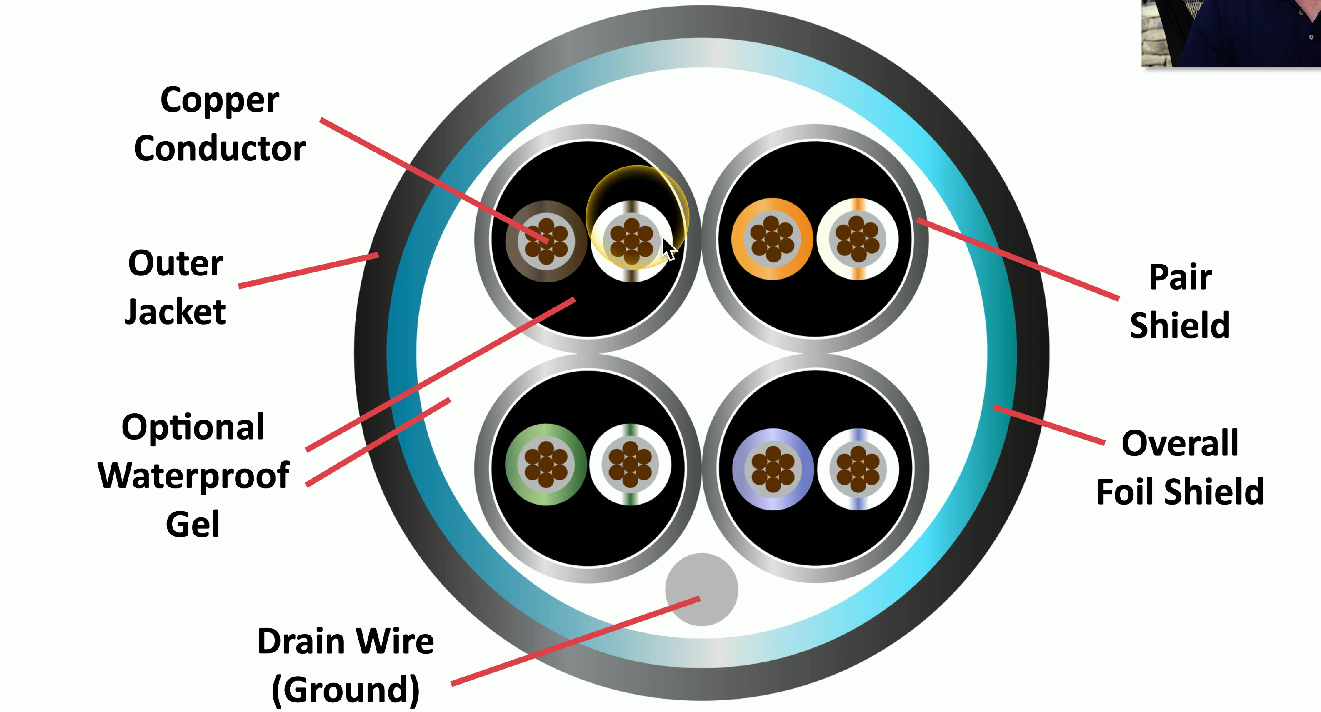3.2a - Network Cables: Professor Messer
Network Cables
Copper
Categories
Include wires such as:
Category 5 (Cat 5): Uses the 1000BASE-T (1Gbit/s) ethernet standard, with a supporting distance of up to 100 meters.
Category 5 enhanced (Cat 5e): Uses the 1000BASE-T (1Gbit/s) ethernet standard, with a supporting distance of up to 100 meters.
Category 6 (Cat 6): Uses the 10GBASE-T (10 Gbit/s) ethernet standard, with a supporting distance of up to 55 meters (unshielded) or 100 meters (shielded).
Category 6 augmented (Cat 6A): Uss the 10GBASE-T (10GBASE-T (10 Gbit/s) ethernet standard, with a supporting distance of up to 100 meters.
Coaxial

Typically used for cable modem/cable television. RG-6 is the most common form of this cable.
Shielded twisted pair

Balanced wire pair: two wires with equal and opposite signals.
Sometimes referred to as Transmit+/Transmit- or Receive+/Receive- because of this
MUST BE TWISTED: Keeps a single wire constantly moving from the interface, so any interference can be identified
Opposite signals are compared at the other end of the wire.
Has additional shielding to protect against interference.
Shielding on each pair and/or overall cable
STP cables are also grounded
Acronyms for shielding:
U = unshielded
S = braided shielding
F = foil shielding
Format: [overall shielding]/[wire shielding]TP
Example: S/FTP - braided shielding outside the wires, foil shielding around each individual wire.

Direct burial STP: Placing network cabling in the ground as an alternative to overhead cabling.
Designed to be waterproof and often filled with gel to repel water.

T568A/T56B standard
The cabling standard for pin/pair assignments for twisted pair cabling.
Two variations based on color coding are used to maintain consistency in installations. This includes using T568A for residential wiring and T568B for commercial applications.

Unshielded twisted pair
Cables with no additional shielding - most common type of twisted pair cabling.
Plenum-related
A plenum is an area inside a commercial building that stores warmer air/returned air for heating and cooling.

Network cables are typically placed inside here - in the case of fire, network cables may produce smoke that may be returned to the regular office building.
If an office has a plenum, using plenum-related cabling is essential to reduce problems in the event of a fire.
Examples of plenum-rated cables:
Fluorinated ethylene polymer (FEP) or low-smoke polyvinyl chloride (PVC).
May not be as flexible, but fire resistant.
Optical
Single-mode
Multimode
Multi-mode: Ideal for short distances, allowing multiple light paths for greater bandwidth.